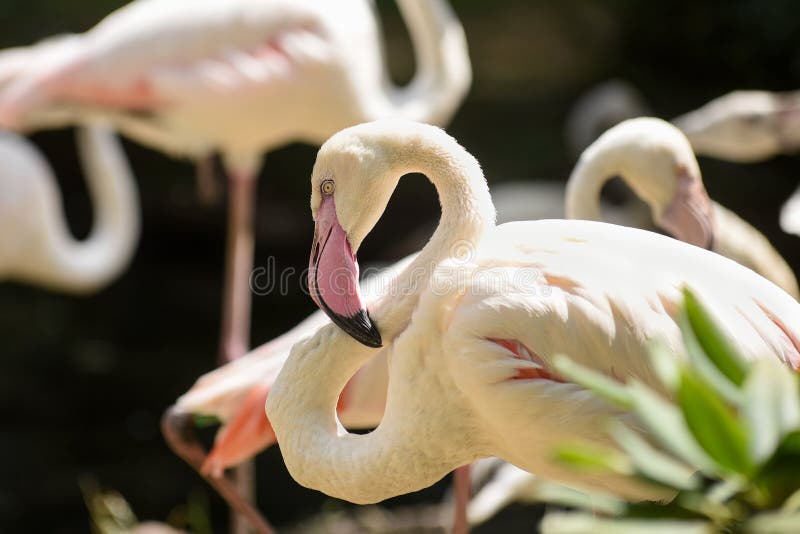
#White flamingo free#
Our framing includes FREE DELIVERY within the UK (shipping charges apply outside the UK). Thanks to the many Nature Reserves across Italy they have every chance of increasing their numbers and interested visitors have the opportunity to see them on guided walks.Many of the prints at Enter Gallery have the option to add a hand-crafted frame. The future of all of these wild animals and birds depends on their habitat being left undisturbed and them being left in peace to breed, away from human interference, especially hunters. Though it can be difficult to get close to them they are easily visible due to their large size (over a metre high with a wing span of over two metres) and recognizable with their unmistakable silhouette (long legs and neck and large curved beak) as well as their beautiful colouring. They nest in colonies on low muddy banks surrounded by water. The rich nutrients in the algae, small molluscs and crustaceans, are filtered up by special gills in the birds’ beaks. There are more than a thousand wolves in the north-central Apennines, and a couple of hundred in the southern Apennines Flamingosįlamingos can be seen mostly in Tuscany, Puglia, Emilia-Romagna and Sicily where they frequent coastal wetlands, lagoons, saltpans and ponds.

You can find more details on the website of The Abruzzo National Park.

Their diet is made up of wild boar, deer and rodents and they can weigh up to 40 kilograms. They are difficult to spot as they are nocturnal in their habits, and during the day they retreat to the wildest and most unreachable places. The last survey conducted by ISPRA, showed that there were probably 70-ish in the Alps, more than a thousand in the north-central Apennines, and a couple of hundred in the southern Apennines. The Italian wolf is a subspecies of the grey wolf. Don’t get too close if it is a mother with young.Īccording to legend, wolves played an important part in the birth of Rome, and there are still hundreds roaming the country 2,700 years later. Look for a blackish-grey back, with a slight bristly ridge, and long snout hiding in the undergrowth. Your best chance of spotting a wild boar is when driving along a winding country road at dusk. At certain times of year they can be hunted and there are special Tuscan dishes that include Wild Boar meat, these can be tasted at one of the many food festivals that are held throughout the year. Weighing between 50 to 180 kg they have a big appetite for berries, roots, tubers, acorns, beech nuts, fruits, snails, worms and birds eggs, and can also cause damage to agriculture, which doesn’t please vineyard owners. There are thought to be over 200,000 of them in Tuscany alone. The Italian wild boar or “cinghiale” is well known in Tuscany, especially in Maremma, but can also be found across other regions. Some wild animals in Italy are seen even less frequently and can only be spotted in certain areas. After all, it was their home before it was ours. During our own house renovation, we left some ledges for nesting, rocks for frogs and lizards to hide under and holes in the stone for bees and geckos. Not all house buyers consider when they begin building or renovating a property that buildings can be a refuge for wildlife. As they say “Their presence, the songs, the flights, the colours, represent the wonderful hope of a better world.” Lipu is encouraging homeowners to consider how they can help local wildlife. It manages 30 reserves, and rescues wild animals in distress. Lipu is the association for nature conservation, the protection of biodiversity and the promotion of ecological culture in Italy. We also see the occasional hedgehog, fox, field mouse, vole and, of course, the cicadas that always add their chattering sound to early summer.ĭuring our own house renovation, we left ledges for nesting, rocks for frogs and lizards to hide under and holes in the stone for bees and geckos Lipu Find homes in Italy via our property portal.Īs well as the many sparrows, which constantly try to make nests on beams under our veranda, there are magpies, wood pigeons, doves, warblers, wagtails, owls, bats and kestrels, and we get annual visits from robins, black redstarts, starlings, swallows, herons and the beautiful Hoopoe bird. As we keep hunters out of our land it has become somewhat of a sanctuary for birds, and we live with the constant sound of bird song. During my first year living in Italy I saw hares, rabbits, quail and pheasant, but I haven’t seen many of these since and I want to play my part in protecting the locally endangered wildlife. Marking United Nation’s World Wildlife Day last week, made me think about the animals and birds in this beautiful country.

You may have seen a gecko or a cicada in Italy, but have you seen a bear or wolf?


 0 kommentar(er)
0 kommentar(er)
